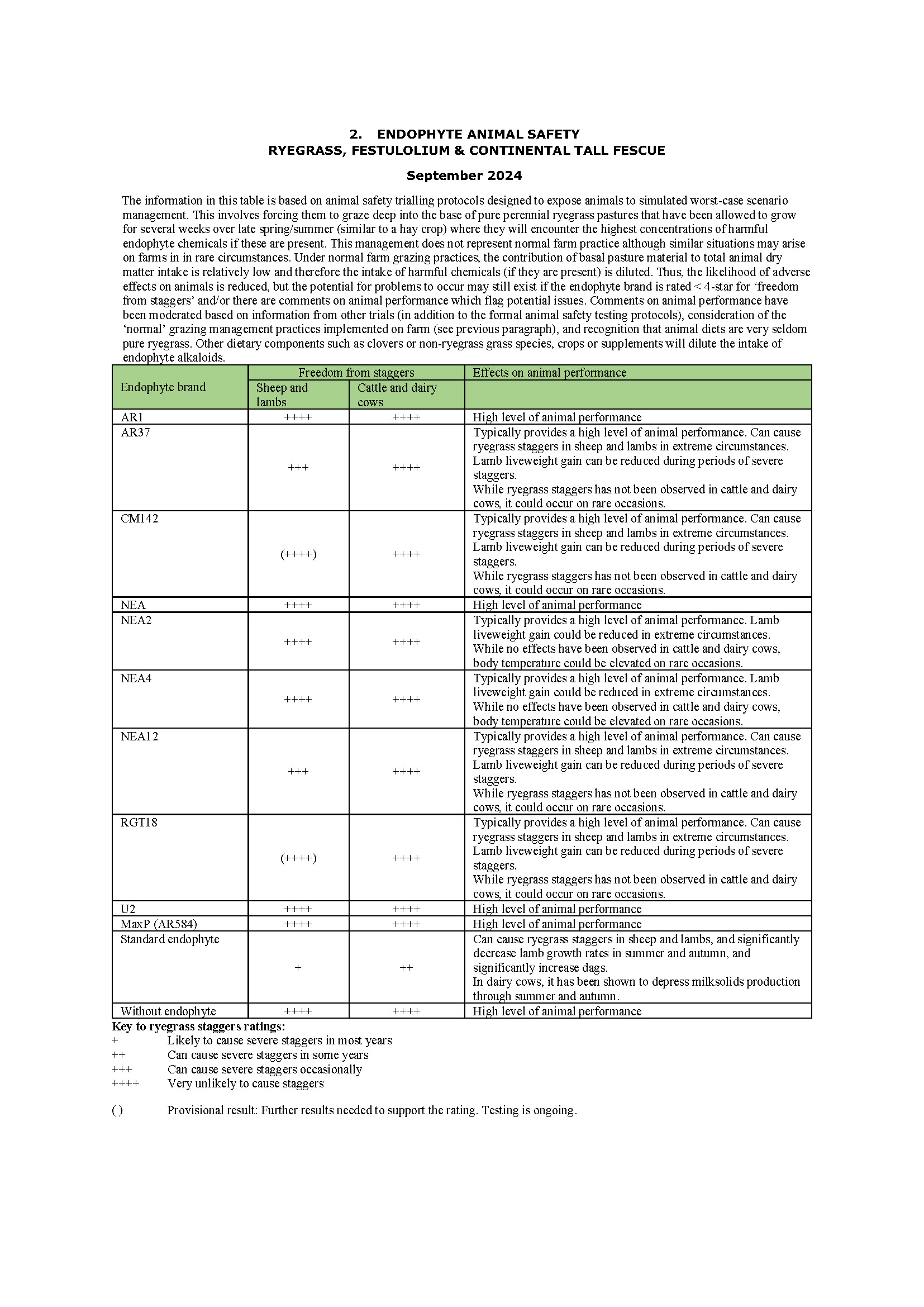Pastures with AR37 produce more drymatter and through better persistence, pasture quality should be higher meaning stock have a better feed supply on offer. With its improved persistence, the risk of feed deficits should also be reduced. Across Australia and New Zealand, ryegrass with AR37 provides the ideal option for superior pastures, where ryegrass pastures with current endophyte options struggle against insect and weed invasion. Ryegrass with AR37 has been tested by AgResearch for liveweight gain in sheep, and animal performance was the same as ryegrass without endophyte, and AR1 ryegrass. Sheep performance is considerably better with AR37 than standard endophyte. The incidence of dags is as low with AR1.
Growth rates of lambs grazing various endophyte type ryegrasses
(Mean of 3 years)
Standard endophyte association grams/day
AR37 association grams/day
Endophyte free ryegrass grams/day
44
129
131
Although AR37 can cause ryegrass staggers. Trials have shown that on average the frequency, duration and severity of ryegrass staggers is less than for standard endophyte. However on occasions, sheep (and potentially other animals) grazing AR37 ryegrass may be severely affected. After many years of use on commercial dairy farms, ryegrass staggers have not been observed in dairy cows on-farm to date. AR37 varieties should not be used on properties grazing either deer or horses. Another key benefit of AR37 is that it does not cause heat stress or flystrike, which can be associated with other endophytes that hold high levels of ergovaline. *AR37 is only recommended for sheep, beef and dairy livestock.
Endophyte Animal Safety
(Ryegrass, Festulolium and Continental Tall Fescue)

